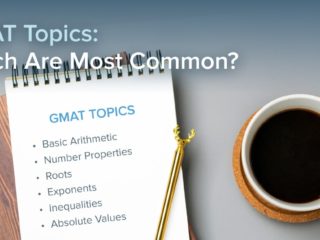Last Updated on May 5, 2023
GMAT OFFICIAL GUIDE PS
Solution:
The defining factor of an arithmetic sequence is that there is a constant difference d between each successive pair of terms.
We are given an arithmetic sequence p, r, s, t, u. We need to determine which of the following MUST also be an arithmetic sequence. An easy way to determine this will be to choose convenient numbers for our initial sequence. Let’s let the sequence look like this:
p, r, s, t, u = 2, 4, 6, 8, 10. Notice that the constant difference between each term is d = 2, and thus we are assured that it is an arithmetic sequence.
We can now use these numbers in the sequences presented in the three statements.
Statement I: 2p, 2r, 2s, 2t, 2u → (2 x 2), (2 x 4), (2 x 6), (2 x 8), (2 x 10) →
4, 8, 12, 16, 20
Notice that the above number set follows the definition of an arithmetic sequence, with a constant difference of d = 4. Thus, Statement I MUST be true.
We can eliminate answer choices B, C, and E.
Statement II. (p – 3), (r – 3), (s – 3), (t – 3), (u –3) →
(2 – 3), (4 – 3), (6 – 3), (8 – 3), (10 – 3) →
-1, 1, 3, 5, 7
Notice that the above number set follows the definition of an arithmetic sequence, with a constant difference of d = 2. Thus, Statement II MUST be true.
We can eliminate answer choice A. Even though we know that D is correct, let’s check statement III anyways.
Statement III. p^2, r^2, s^2, t^2, u^2 →
2^2, 4^2, 6^2, 8^2, 10^2 →
4, 16, 36, 64, 100
Notice that the above number set DOES NOT follow the definition of an arithmetic sequence because there is not a constant difference between each of the items in the set. Thus, Statement III is NOT true.
Answer: D
Note: Note that in the answer choices presented, the option “I, II, and III” is not given. Thus, once we determined that I and II were true we could have immediately chosen D as our answer.



